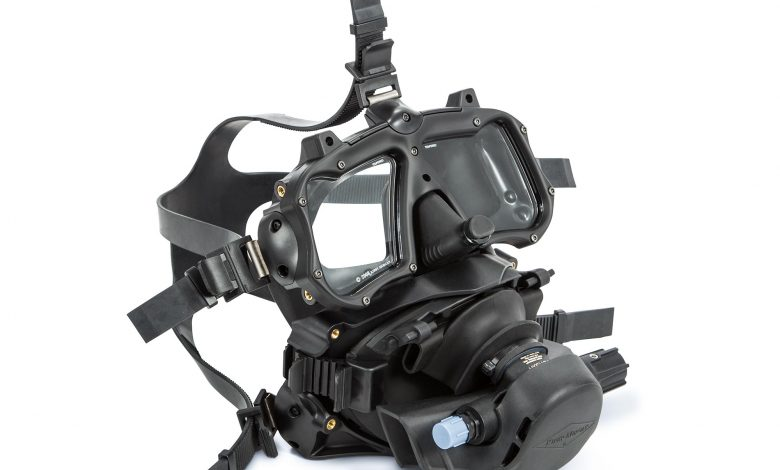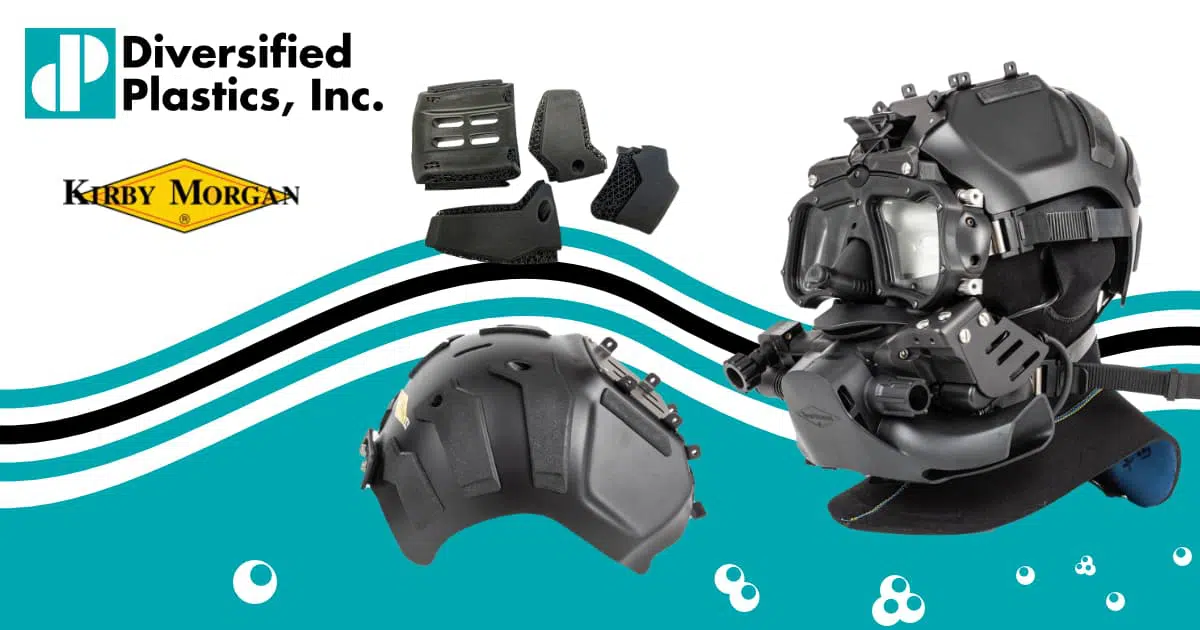Several years ago, Kirby Morgan began researching additive-manufacturing technology to advance its dive helmets with components that are light, durable and comfortable. As part of this process, Pete Ryan, engineer at Kirby Morgan, partnered with Diversified Plastics, Inc. (DPI), to manufacture parts for one of their newest dive helmet models via the company’s Acceleration Station.
Founded in 1966, Kirby Morgan designs and manufactures high quality underwater breathing equipment. Lightweight and comfortable, the company’s dive helmets are used for commercial applications, such as offshore oilrig installation and maintenance as well as inspection and repair on hydroelectric dams and ships.

In addition to parts produced by DPI using their Acceleration Station additive-manufacturing services, some components for the helmet were 3D printed at Kirby Morgan with two other processes. DPI’s Acceleration Station is powered by the Carbon® Digital Light Synthesis (DLS) process.
The Acceleration Station’s engineering and production teams work closely with customers to save time and money by optimizing parts for digital manufacturing. Design for additive manufacturing can reduce component pieces or make previously unmanufacturable parts possible, such as lattices and complex geometries. Central to DPI’s Acceleration Station, the Carbon DLS process offers customers production-quality end-use parts without the added time and cost of tooling. Up to 100 times faster than traditional additive methods, the DLS process and can produce low- to mass-production quantities. Parts are produced from a wide selection of materials that can be customized for mechanical properties, surface finish and stability. Product customization and variable product marking are also possible.
Manufacturing on Demand
Instead of using traditional foam pads, DPI produced seven 3D printed lattice compression pads that are incorporated on the inside of the helmet. The pads have an integrated surface skin and lattice compression zones that vary in density based on where the pads sit on the diver’s head — maximizing comfort.
In the initial stages of the project, DPI utilized a variety of software applications to develop the variable-density lattice structure and integrated outer skin. A member of the Carbon Production Network, DPI partnered with the Carbon team to complete print scripts modified to accommodate the cost needs of the customer.
Using Carbon’s EPU40 resin, DPI produced over 20 design iterations for testing. This process accelerates development, allowing new designs to efficiently be additive-manufactured and ready for testing the next day.
* This article is reprinted from 3D Printing Media Network. If you are involved in infringement, please contact us to delete it.
Author: Davide Sher



Leave A Comment